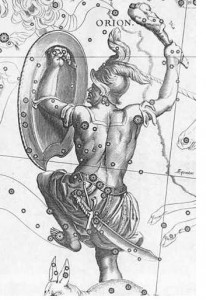THURSDAY, 19 MAY 2011
 Nick Risinger and his father spent a year making the atlas, travelling around the world to take photographs at remote locations in the Northern and Southern hemispheres. To ensure perfect images, shooting took place well away from cities and other sources of light pollution, during a new moon, and in cloudless weather conditions. They also used specialised tripod equipment that moves in sync with the Earth’s rotation. Because starlight is so faint, astrophotographers use very long exposure times, which cause blurry ‘star trails’ unless corrected. A grand total of 37,440 exposures were taken, an incredible feat for an amateur, and were finally pieced together to make a 5-gigapixel image showing a 360 degree view of the night sky [1].
Nick Risinger and his father spent a year making the atlas, travelling around the world to take photographs at remote locations in the Northern and Southern hemispheres. To ensure perfect images, shooting took place well away from cities and other sources of light pollution, during a new moon, and in cloudless weather conditions. They also used specialised tripod equipment that moves in sync with the Earth’s rotation. Because starlight is so faint, astrophotographers use very long exposure times, which cause blurry ‘star trails’ unless corrected. A grand total of 37,440 exposures were taken, an incredible feat for an amateur, and were finally pieced together to make a 5-gigapixel image showing a 360 degree view of the night sky [1].Although Risinger’s atlas is not the first photographic survey of the night skies, his images are exceptionally rich and detailed. Unlike similar photos taken for scientific purposes, his images have natural colour and appear more pleasing to the human eye, and his atlas allows users to rotate, pan and zoom in on the image. By clearly marking constellations and other features, Risinger hopes that his atlas will become a popular artistic and educational resource, inspiring a new generation to learn about our universe. The Photopic Sky Survey can be found online at www.skysurvey.org,
Written by Emma Hatton-Ellis
